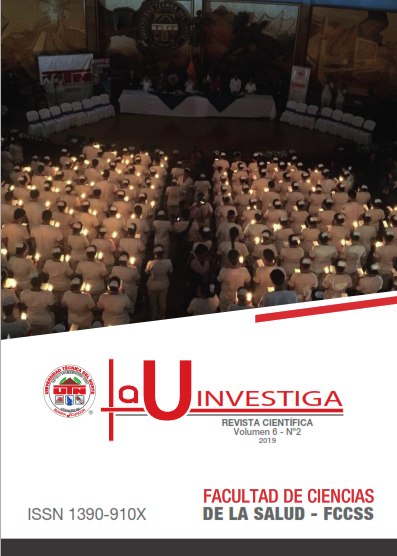Determinación del porcentaje óptimo de sustitución de harina de trigo por harina de amaranto en la elaboración de galletas
Determination of the optimal percentage of substitute for wheat flour with amaranth flour in the preparation of cookies
Keywords:
cookies, amaranth, flour, nutrition, proteinAbstract
The research work consisted of determining the optimal percentage of substitution of wheat flour for amaranth flour for the production of biscuits. The methodology used was an experimental design (DCL Latin Square Design) in which we worked with mixtures of wheat flour and amaranth in proportions of T1 75:25, T2 50:50, T3 25:75 and T4 100: 0 respectively. The variables evaluated were sensory analysis, pH, protein and
humidity. The biscuit formulations were subjected to a process under equal conditions of preparation, cooking and evaluation. As a result, all treatments had statistically significant differences with an error of 5%. The samples had a pH between 6.14 and 6.33, being within the requirements of the NTE INEN 2 085: 2005 standard: Cookies. Requirements The amaranth flour contributed to improve the nutritional quality of the
cookies, raising the protein content of the cookies. The flavor profile of all the samples was performed, finding that the best was T2. It was determined that the optimal percentage of substitution of wheat flour for amaranth flour was T2 50:50, because it presents better sensory and nutritional characteristics.
Downloads
References
NTE INEN 2085. Galletas. Requisitos. Serv ecuatoriano norm. 2005;0–6.
Science the, of m, provides p, on p, science s, researchers by, et al. Percepnet - ciencia the science module of percepnet provides papers on perception and percepnet - ciencia. 2009;1–6.
De p, ch lespo”. Escuela superior politecnica de chimborazo facultad salud pública escuela de gastronomía “utilización de harina de trigo y quinua para la elaboración de galletas, para los niños del tesis de grado previo a la obtención del título de.
Cultivos andinos fao - nutricion y composicion quimica [internet]. [cited 2020 jul 26]. Available from: http://www.fao.org/tempref/gi/reserved/ftp_faorlc/old/prior/segalim/prodalim/prodveg/cdrom/contenido/libro01/cap7.htm
Juan r, pastor j, alaiz m, megías c, vioque j. Caracterización proteica de las semillas de once especies de amaranto. Grasas y aceites. 2007;58(1):49–55.
Dyner l, drago s, piñeiro a, sánchez h, gonzález r, villaamil e, et al. Composición y aporte potencial de hierro, calcio y zinc de panes y fideos elaborados con harinas de trigo y amaranto. Arch latinoam nutr. 2007;57(1):69–77.
INEC [internet]. [cited 2020 jul 26]. Available from: https://www.ecuadorencifras.gob.ec/documentos/web-inec/estadisticas_sociales/ensanut/msp_ensanut-ecu_06-10-2014.pdf
Rosas-castillo e, del rosario m. Evaluación de formulaciones de harina de trigo con harina de amaranto para galleta [internet]. Vol. 4. 2017 [cited 2020 jul 26]. Available from: www.ecorfan.org/bolivia
Medina m le, muñoz br, garcia sn. Investigación y desarrollo en ciencia uso de la harina de amaranto de dos variedades (dgeta y gabriela) en la preparacion de galletas tipo barra. Vol. 1. 2016.
Published
How to Cite
Issue
Section
License
Copyright (c) 2019 Alejandra Maribel Gómez Gordillo , Geovanny Rodríguez, Ligia Huayllasaca, Adriana Miniet, Andrea Huaca, Carla Araujo

This work is licensed under a Creative Commons Attribution-NonCommercial 4.0 International License.
The authors retain the copyright and guarantee the journal the right to be the first publication of the work as well as licensed under a Creative Commons Attribution-NonCommercial-ShareAlike 4.0 International License that allows others to share the work with an acknowledgment of the authorship of the work and the initial publication in this magazine. Authors may separately establish additional agreements for the non-exclusive distribution of the version of the work published in the journal (for example, placing it in an institutional repository or publishing it in a book), with an acknowledgment of its initial publication in this journal.

La U Investiga by La U Investiga is licensed under a Creative Commons Reconocimiento-NoComercial-CompartirIgual 4.0 Internacional License.You can find permissions beyond those granted with this license athttp://revistasojs.utn.edu.ec/index.php/lauinvestiga/index





